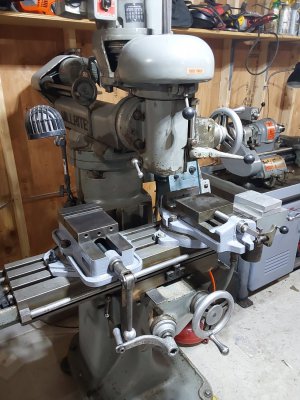You cannot use a VFD as a machine power source for multiple drives in most cases if the output of the VFD is on and the motors are switched on/off either by a mechanical switch or a contactor between the VFD output and the motor. If you were to use a VFD as such, it typically needs to be oversized by a factor of 4-5X the maximum of the machine current, it needs to operated in straight V/Hz mode (not vector/feedback mode) and typically in fixed frequency of 60Hz. Also, transformers and other control systems are not designed to run off of PWM 3 phase. You can have multiple motors that are directly wired to the VFD run off of a single VFD, but must be in V/Hz mode and you give up individual motor protection/overload control when the output current is not single motor specific or you need specific overload device for each motor. The motor performance in straight V/Hz is poorer in particular at below 50% of the motor base frequency.
At the cost of VFD's these days, it is far easier and more cost effective to buy two smaller VFD's then one larger one. These days I typically recommend the Automation Direct VFD drives so something like a 2 Hp GS21 drive will run around $200, a smaller drive around $150. There is also the WEG Electric CFW100 series if all the drives are 1 Hp or less, these are simple DIN mount mico VFD drives, they also have a larger Hp series. Using multiple VFD, each drive can be programmed for the particular motor and the operating controls. There are also less expensive dives, they tend to have poorer manuals and more operating issues, as well as no technical support or poor warranty.
If you had two motor drives that operated separately and only one at a time, then some of the VFD's have the ability to program two separate sets of motor parameters and switch between them with a programmed input, and you also need a mechanical switch to switch the VFD output. I have done this with dual motors machines, as well as dual speed motors, but it can get complicated and the results were not always satisfactory. The other option is an RPC, static converter, or digital phase converter such as a Phase Perfect. The Phase Perfect has a new lower cost line, which are competitively priced and run about the same as a factory RPC of the same Hp rating. If you had multiple 3 phase machines that you wanted to operate at a fixed 60Hz 3 phase power then the Phase Perfect is reasonable and simple alternative. But on a smaller Hp scale, I find multiple VFD to be a better solution.


